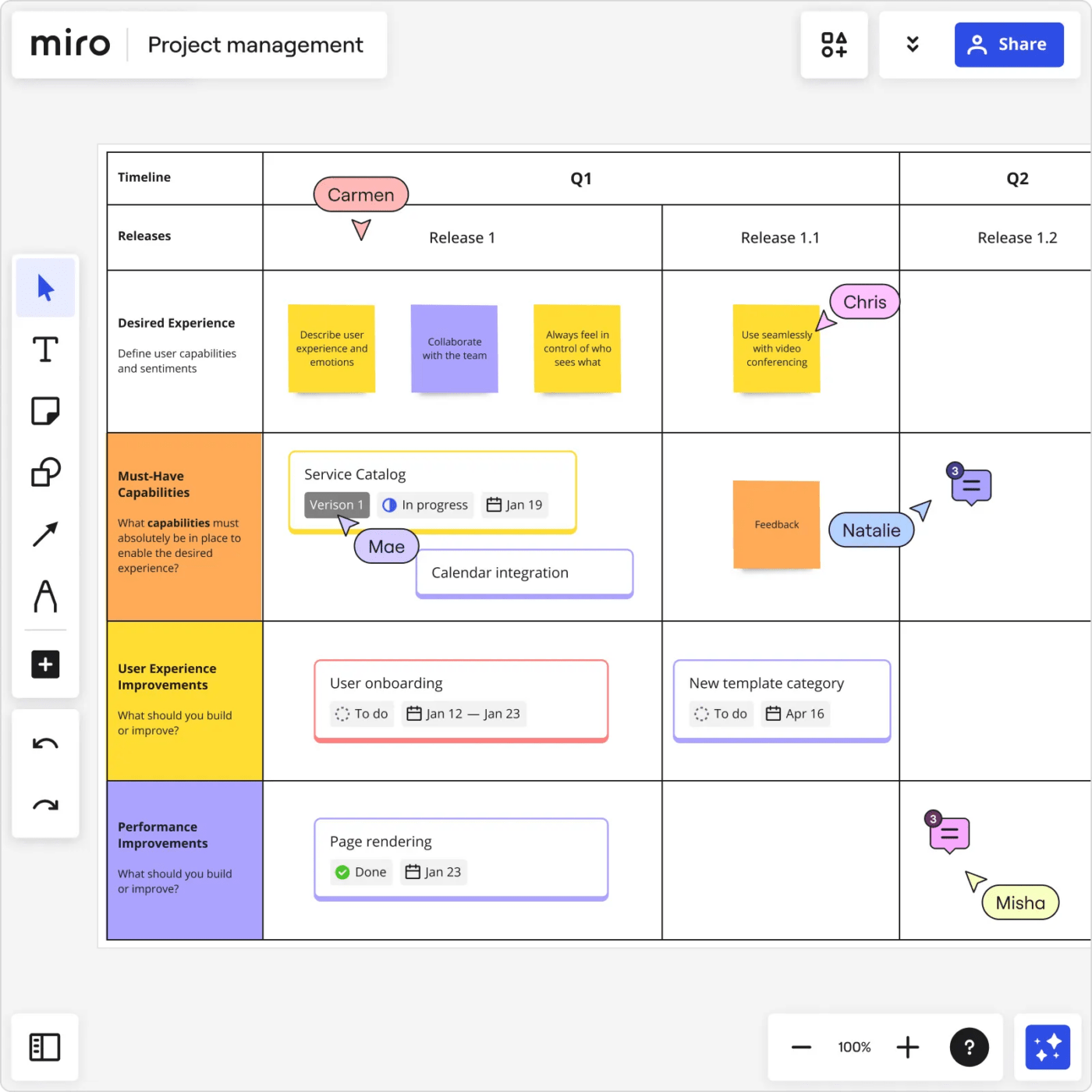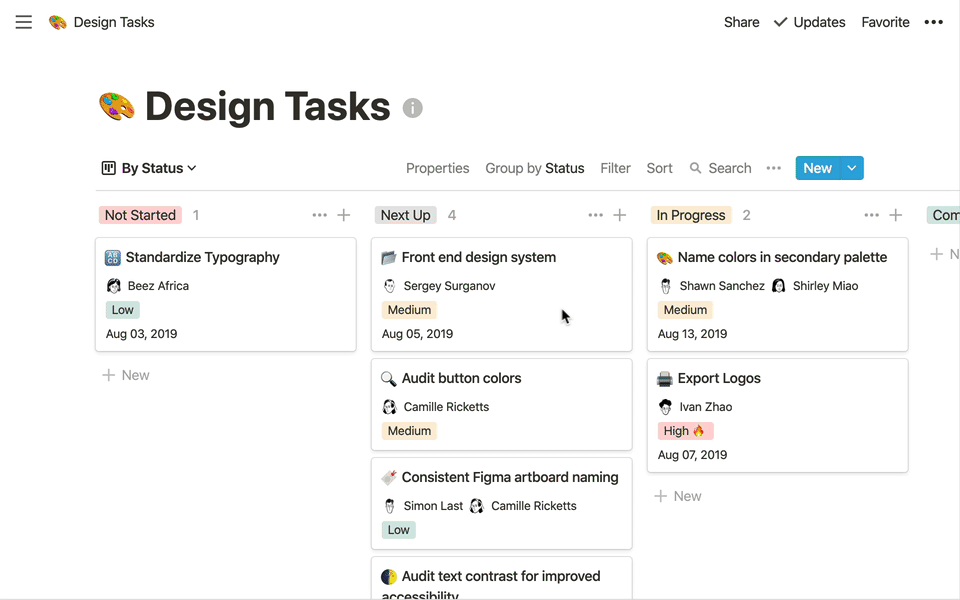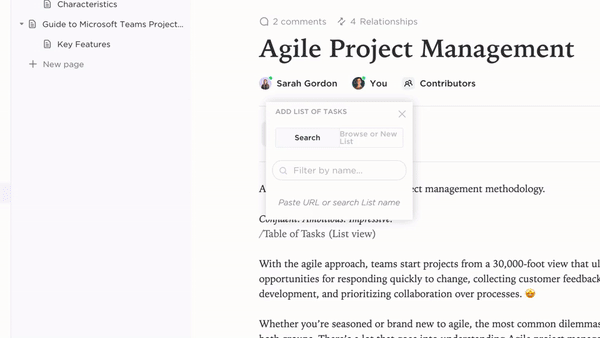Miro Vs Notion: Which Task Management Tool is Best?

Sorry, there were no results found for “”
Sorry, there were no results found for “”
Sorry, there were no results found for “”
Managing productivity can be challenging, especially when tracking tasks for complex projects. To help make life easier, we now have collaborative online whiteboard platforms that go beyond jotting down tasks.
It allows you to add details for each task, including the ability to track subtasks within the main task, share documents, brainstorm on a shared canvas, and much more. But with so many options, how do you pick a task management software that differentiates itself from other tools?
The answer lies in choosing a platform that combines note-taking features, supports integrations, and helps your teams organize their tasks effectively.
With several project planning and collaborative online whiteboard platforms, there are many options, and each tool differs regarding key features and services.
This guide will compare two popular task management tools—Miro Vs. Notion.
Miro is a visual collaboration platform that will ignite your team’s creative spark. Think of it as your digital whiteboard but with a lot more features. It is a flexible workspace where your team can communicate and design projects faster, enabling you to build, iterate, and design your next big idea.
With Miro, you can:
Miro board provides an endless digital canvas that lets your ideas develop freely, accommodating even the most ambitious brainstorming sessions. With this feature, you can plan complex projects, brainstorm, and ensure your teams organize their deliverables in a single dashboard.
Using Miro cards, you can convert ideas into sticky notes or text boxes or add detailed information like status, assignee, and due date—no switching is needed.

Get a clear view of your project planning using ready-to-use Kanban templates designed for specific needs, from brainstorming sessions to product roadmaps. This saves you valuable time, and you can prioritize work by adding Miro cards to a Kanban board with editable swimlanes and columns.
Work together seamlessly, regardless of location. See edits and map dependencies with connectors, fostering an interactive and dynamic brainstorming experience.

Miro supports integrations with 130+ apps and popular tools. This helps you collate all your task-driven data in a single solution, making task management efficient for you and your stakeholders.
One of the top Miro alternatives is Notion, an all-in-one workspace for all your task management and note-taking needs. This tool offers many features that combine note-taking with database management, visual collaboration, and maintaining a shared canvas or Notion view for all your personal and business needs.

From basic tasks to managing complex projects, Notion tools provide a single workspace to organize your essential activities. Plus, thanks to its strong community, you can easily create and use thousands of Notion templates to help you:

Notion’s flexible framework allows you to use it for all your task management requirements, including:
With Notion’s flexible blocks, you can create anything from a simple to-do list to complex dashboards, helping you tailor your workspace to your exact needs.
Notion can help you fetch data and integrate with top software like Slack, Google Drive, Gmail, Asana, and 149 other popular tools. If you like a more tailored integration, you can even build your public API, which makes it unique from other tools.
For teams working in diverse geographies, Notion allows you to maintain your workspace and edit documents in different languages. Currently, it supports English, Korean, Japanese, French, German, Spanish, and Portuguese.
The main difference between Miro and Notion is the additional capabilities that you get with Notion. While Miro is categorized mainly as a task management and visual collaboration platform, Notion goes beyond with Note-taking management, Docs, Knowledge Base, and Wiki.
Here is a quick comparison of all the Notion Vs Miro features and their ratings:
| Features | Notion | Miro |
| Templates | ✅ | ✅ |
| Community | ✅ | ✅ |
| AI-based writing & other features | ✅ | ✅ |
| Collaboration | ✅ | ✅ |
| Integrations with third-party tools | ✅ | ✅ |
| Mobile app | ✅ | ✅ |
| Docs | ✅ | ❌ |
| Wiki / Knowledge | ✅ | ❌ |
| Calendar | ✅ | ❌ |
| Forms | ✅ | ❌ |
| Automation | ✅ | ❌ |
| Project management features | ✅ | ❌ |
| Video conferencing | ❌ | ✅ |
| Chat / Messaging | ❌ | ✅ |
| Assignment management | ❌ | ✅ |
| API | ✅ | ✅ |
| Task scheduling | ✅ | ✅ |
| Access controls/permissions | ✅ | ✅ |
| Task scheduling | ✅ | ✅ |
| Collaboration tools | ✅ | ✅ |
| Task progress tracking | ✅ | ✅ |
| Ideal for | Small and large teams who want to go beyond task management, including docs, note-taking, and additional features | Smaller teams who want basic features, clean and simple task management features |
| G2 ratings | 4.7/5 (5059 reviews) | 4.8/5 (5357 reviews) |
| Capterra ratings | 4.8/5 (2101 reviews) | 4.7/5 (1488 reviews) |
Do you need a visual project management solution? Miro has a clear edge.
With its infinite canvas, Miro allows you to use diverse visual tools, such as sticky notes, shapes, connectors, and other collaborative features, to shine during brainstorming sessions and task mapping.
This enables you to build advanced reports, manage complex projects, visualize user research, participate in collaborative sessions, and create workflows with 2500+ Miro and community templates.

With its flexible blocks, Notion is also great for visual project management but lacks the advanced features you get in Miro. With Notion, you get basic elements, making it less suitable for visual task management.
Verdict: Miro is the winner
Between Miro vs. Notion, who wins in collaboration and Note-sharing?
Notion has its benefits, as it focuses on being an end-to-end note-taking and task-tracking platform, making it easy for you to manage projects, track daily habits, or plan an upcoming trip with a friend, all in a single workspace.
But Miro, with its data visualization and collaboration framework, is equally good. You can sync everything in one place, from traditional slides, action items, business reports, and Kanban reports. Plus, you can create interactive video walkthroughs and collaborate live in any presentation or report using its interactive features.
Verdict: Tie
When it comes to managing databases and files, Notion is the clear winner. Miro’s free project management software offers some excellent features, and you can even upgrade to paid versions for advanced features. But when it comes to managing docs, files, and other functionalities, Miro lacks the depth that Notion has.

Notion offers powerful databases with filtering, sorting, and roll-up features for organizing and managing complex tasks. While Miro offers Kanban boards (which every other task management software does), it lacks the depth and functionality of Notion’s database-driven task management.
Verdict: Notion is the winner
Both have their own strengths when it comes to customization and flexibility. Notion uses blocks and allows you to create diverse layouts and content types and manage them in a structured workspace. This will enable you to manage complex tasks and projects and save documents, wikis, notes, and other elements to enhance this.
Miro does excellently with Miro Cards, which allows you to use this platform’s visual elements fully. This helps you visualize your projects, showcases dependencies between tasks and task ownership, and even provides a place for creative brainstorming using the whiteboard feature.
Verdict: Tie
Don’t take our word for it. We also searched on Reddit to understand what users have to say on this topic. Many users agree that in the comparison of Miro vs Notion, Notion is more useful for its advanced features, but they have also realized that
“As many, I fell in love with the flexibility of Notion for a while, but as I grew more and more aware of how it works, I decided that softwares like ClickUp, Todoist, Things3, NirvanaHQ, are way faster, more flexible and overall better at handling tasks.”
Another user talked about choosing between Miro Vs Notion by focusing on the requirement, saying
“Depends on usecase. If you need just see tasks statuses and share details about them — Trello, Asana or ClickUp is a good option
If you need more text docs with ToDos — Notion is good. Miro and similar things are best if you need more ideation and visualization”
The final verdict? Notion and Miro have some excellent features that make it a great option, depending on your use case and requirements.
In the Miro vs Notion showdown, Notion has a slight edge. Notion’s advanced features can go above and beyond, but it doesn’t come close to some top task management and productivity solutions.
Several Notion alternatives combine note-taking and task management. It also helps you with advanced automation, simplifying workflows, and managing end-to-end enterprise or personal tasks.
ClickUp emerges as a viable solution when you have advanced requirements and need an all-in-one productivity platform. A comprehensive project management platform that blends Miro’s visual collaboration strengths and the flexibility of Notion, ClickUp shines in multiple departments.

Think of ClickUp as the Notion AI alternative or the ultimate collaboration hub, where you can:
With ClickUp Whiteboards, your teams can harness the power of visual collaboration. The interactive whiteboard allows you to brainstorm, build flowcharts, and map out your ideas, all within the context of your project.

This allows you to visualize concepts and helps you manage tasks seamlessly. You can
Craft rich and collaborative documents within ClickUp, with real-time editing, AI-powered writing assistance, and seamless integration with project tasks.

ClickUp Docs ensures you can collate all your ideas into a single document, including Docs, links, wikis, and more. Simplify your task management and documents using ClickUp’s vast library of pre-built templates, or create your custom template from scratch. Using ClickUp’s Docs, you can:
Use the advanced features of ClickUp Brain to simplify task tracking, creation, and delegation. This allows you to connect tasks, docs, resources, and all your knowledge with advanced neural networks to help you:
Manage tasks of any size and complexity with ClickUp’s robust task features. ClickUp Tasks help you to assign tasks, set dependencies, leverage automation, and track progress visually—all in one unified platform.

Sign up for ClickUp’s Free Forever Plan to level up your task management.
© 2025 ClickUp